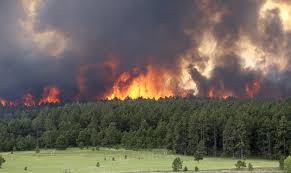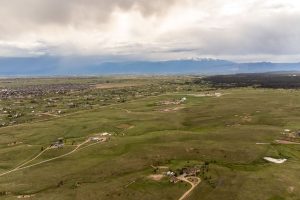Terry Stokka has lived in Black Forest for 29 years. He is president of the Friends of Black Forest, chairman of the Black Forest Land Use Committee and chairman of the Black Forest Water & Wells Committee.
The term zoning is familiar to most of us as designating what can be built on or what use can be made for a parcel of land. Its purpose is to group similar businesses or land uses to keep from having different uses scattered all over.The zoning rules are contained in the county Land Development Code (LDC) which you can find by going to http://www.elpasoco.com under ìDepartmentsî and ìPlanning and Community Development.î The entire LDC outlines in great detail what you can do with your property. Zoning is what should keep me from building a hamburger joint next to your house.The county basically has four different zoning categories ó agricultural, residential, commercial and industrial ó with subareas within each one.Agricultural zoning is primarily A-35 designating 35-acre or larger parcels and A-5 designating 5-acre parcels. This zone covers cultivated land or grazing land and the taxes on such land are much lower than residential property of the same size. In order to qualify for agricultural zoning on grazing land, the owner must have a specified number of livestock for a specified number of months each year.The industrial zones are primarily three categories: I-1 through I-3, designating increasing levels of industrial use. The I-1 zone would be light manufacturing in a building that doesnít produce any fumes, smoke or noise to surrounding properties. I-3 would be for heavy industrial use like the sand and gravel operation on Vollmer Road or the cement batch plant proposed for east of Meadowlake Airport.Commercial uses are divided into the size of the commercial. Neighborhood commercial is for a small business such as a gas station. Larger commercial zones are for strip malls all the way up to the larger stores like Walmart and Safeway.Residential zoning is what affects most of us. Residential zones start at RR-5 (5-acres/lot) and go downward, RR-2.5 (2.5-acres/lot), RR-0.5 (0.5-acres/lot), RS-20,000 (20,000 square-foot lots ó just under Ω acre), RS-6000 (6000 square-foot lots ó about 1/7 acre), RS-5000 (5000 square-foot lots ó just under 1/8 acre), RM-12 (up to 12 dwelling units/acre ó a townhouse or condo) and RM-30 (up to 30 dwelling units/acre ó an apartment complex). As an aside, the largest lot category in the city is 20,000 square feet. The city doesnít want to extend water, gas, electrical and wastewater service to houses that are spread out because of the infrastructure cost.All zoning districts have multiple exceptions and rules so the Land Development Code is over 2 inches thick. If a person wishes to correct something out of the ordinary such as a garage that was inadvertently built too close to the property line he can apply for a variance that is presented to the county commissioners to decide if that is permissible. If that person wishes to do something not normally allowed like storing heavy equipment for an excavating business on a 5-acre residential lot, he must apply for a special use authorization.A common alternative in zoning is the Planned Unit Development (PUD.) Instead of dividing your 100-acre parcel into 18 5-acre lots (allowing for 10 acres for roads and utility easements) under RR-5 zoning, a PUD gives flexibility to have some smaller lots, some larger lots, some park area and a trail. Usually, the lot density remains at 5-acre/lot but this can produce a development with greater appeal and variety. A common alternative for the 100-acre parcel example above is to have 18 2.5-acre lots with 45 acres set aside as open, undeveloped space for trees, wildlife and trails, preserving the natural environment and the 5-acre density. The PUD classification also allows the developer to include commercial such as a corner store, but it is all subject to approval by the county commissioners. The PUD category is becoming more popular as developers want to have a variety of lot sizes and other uses included in their plans.I hope this little tutorial has helped you understand the different zoning categories within the county. The bottom line is that you are not free to do whatever you want with your property. You are constrained by the County Master Plan and the Land Development Code, and it is the responsibility of the county commissioners to follow those documents to maintain consistency and uniformity.






